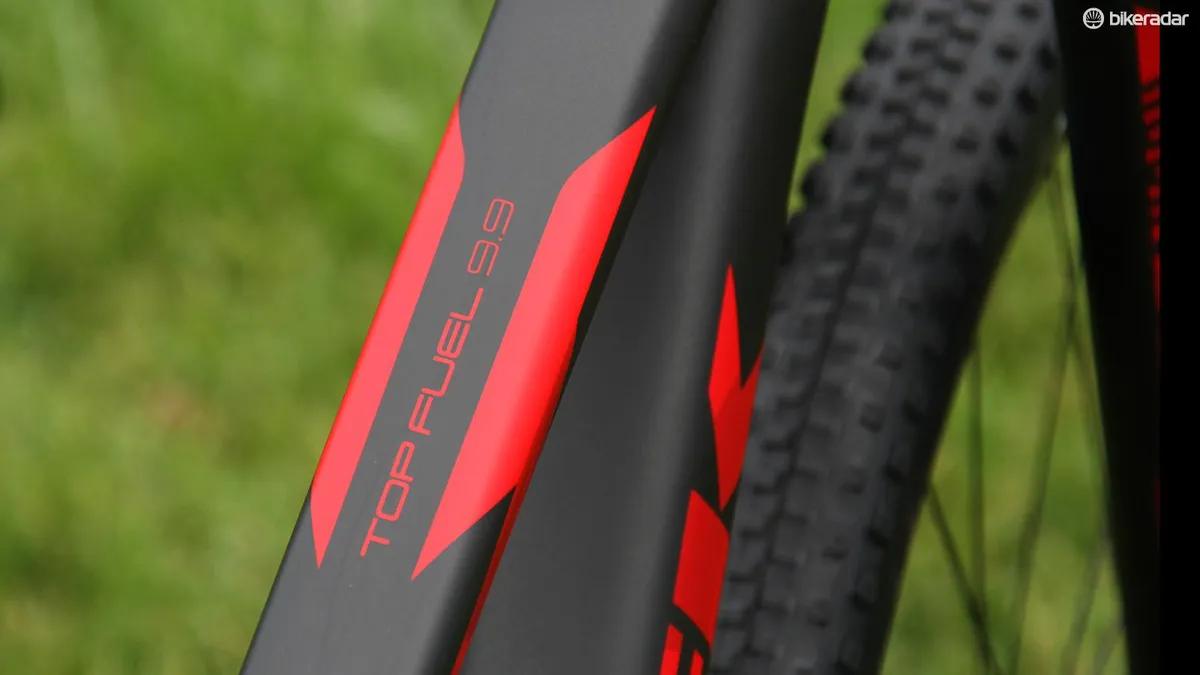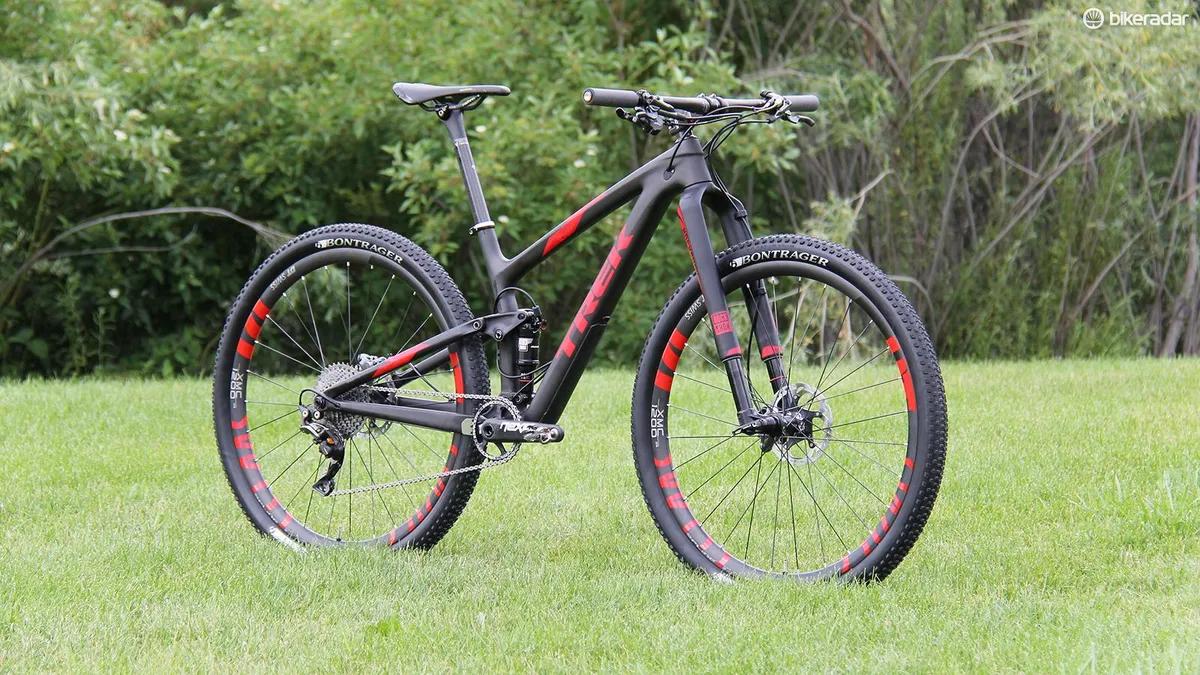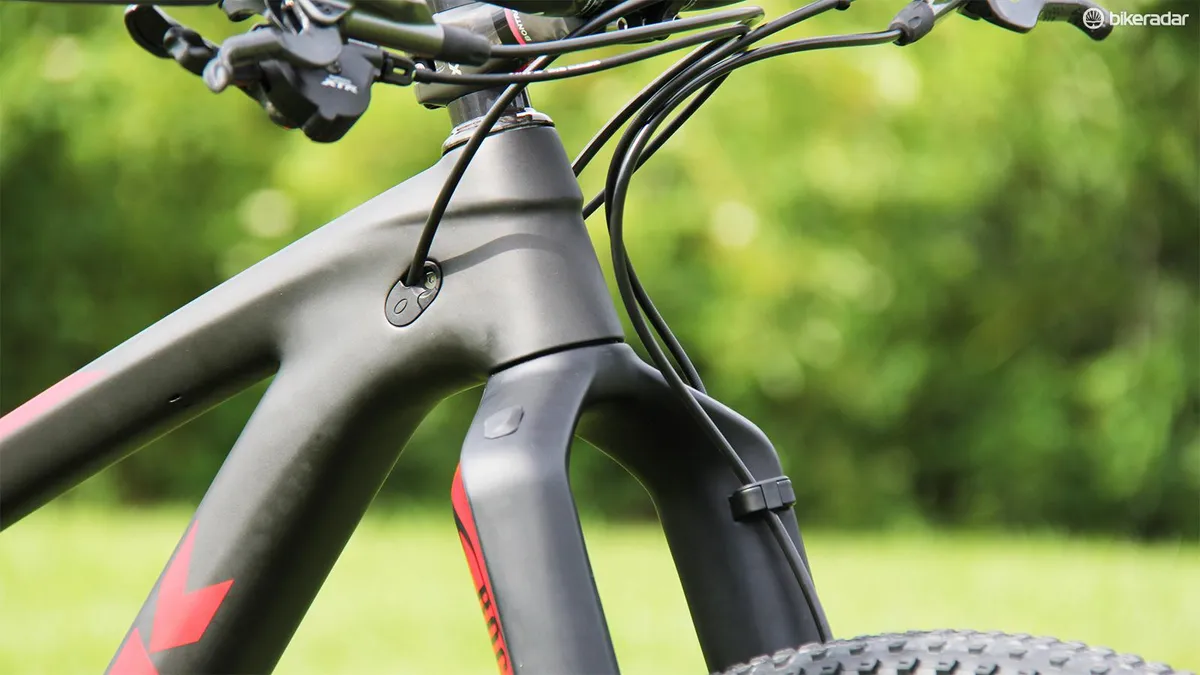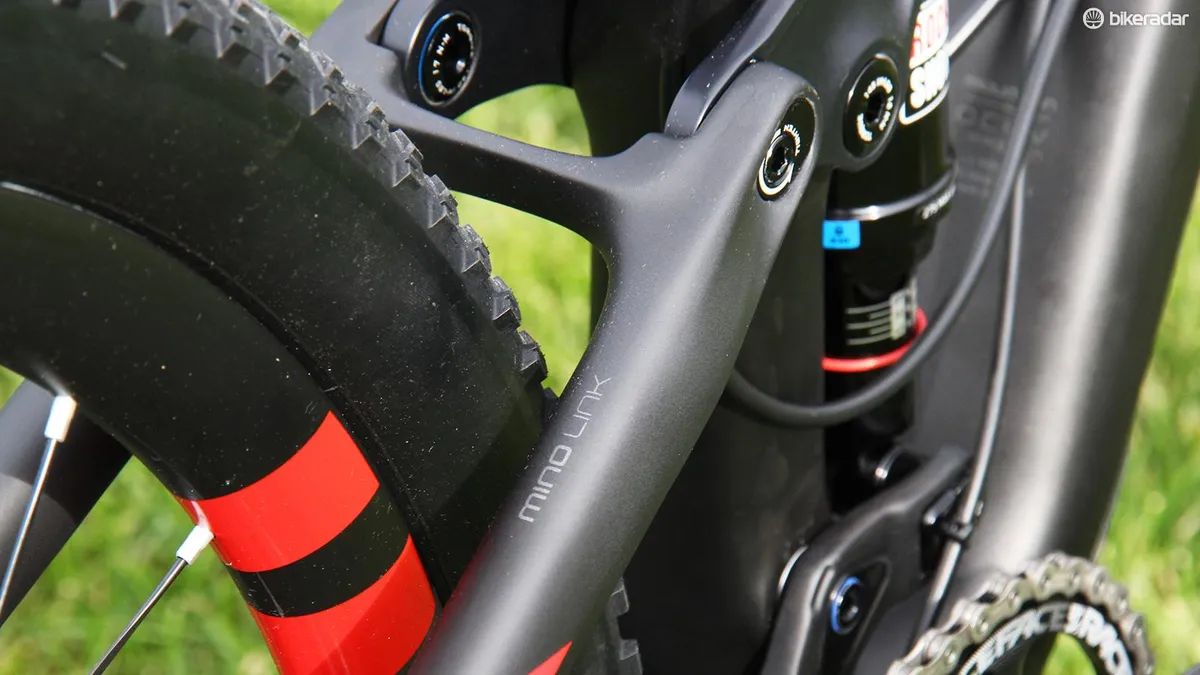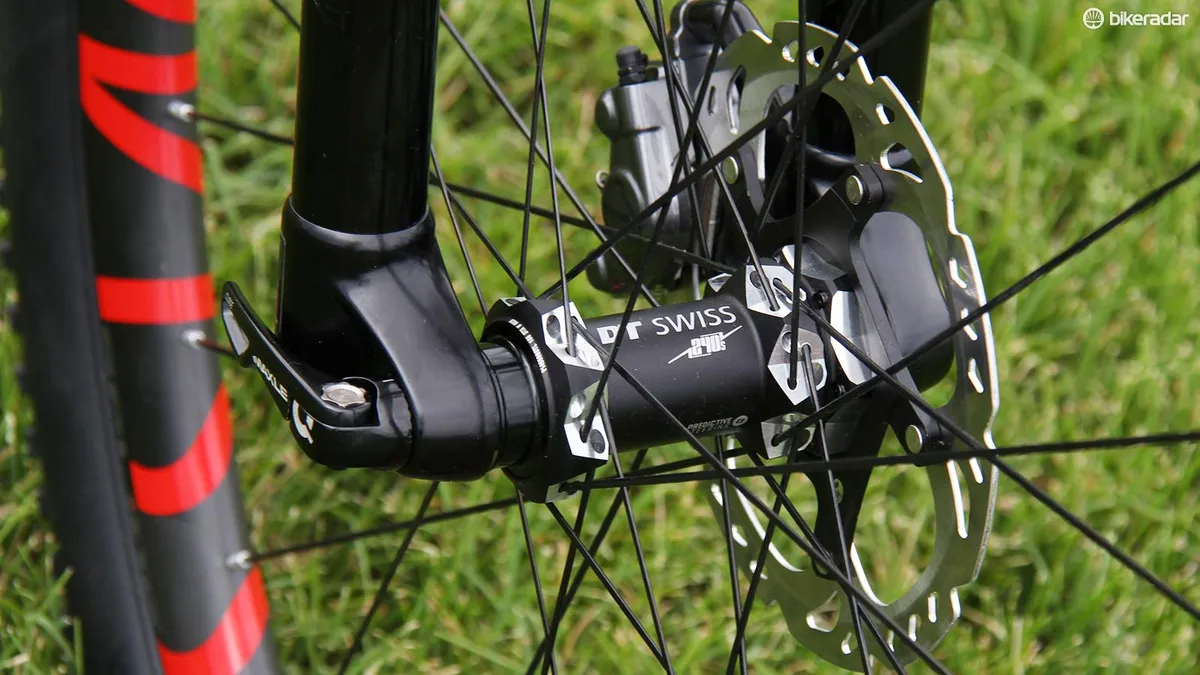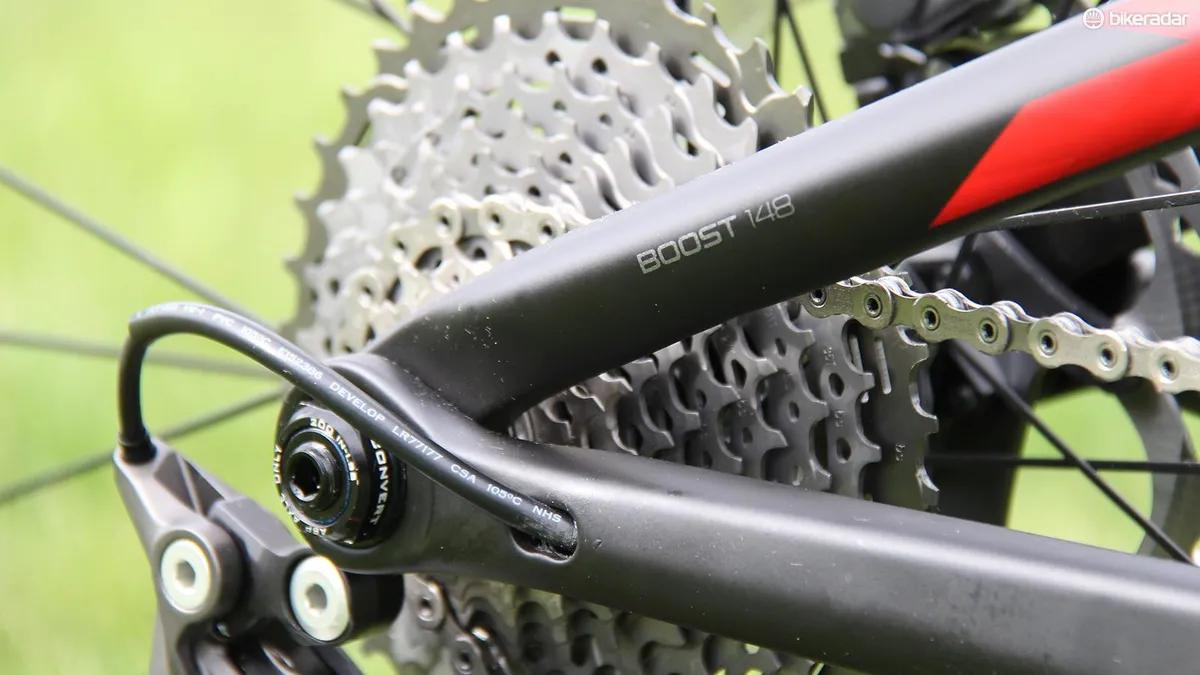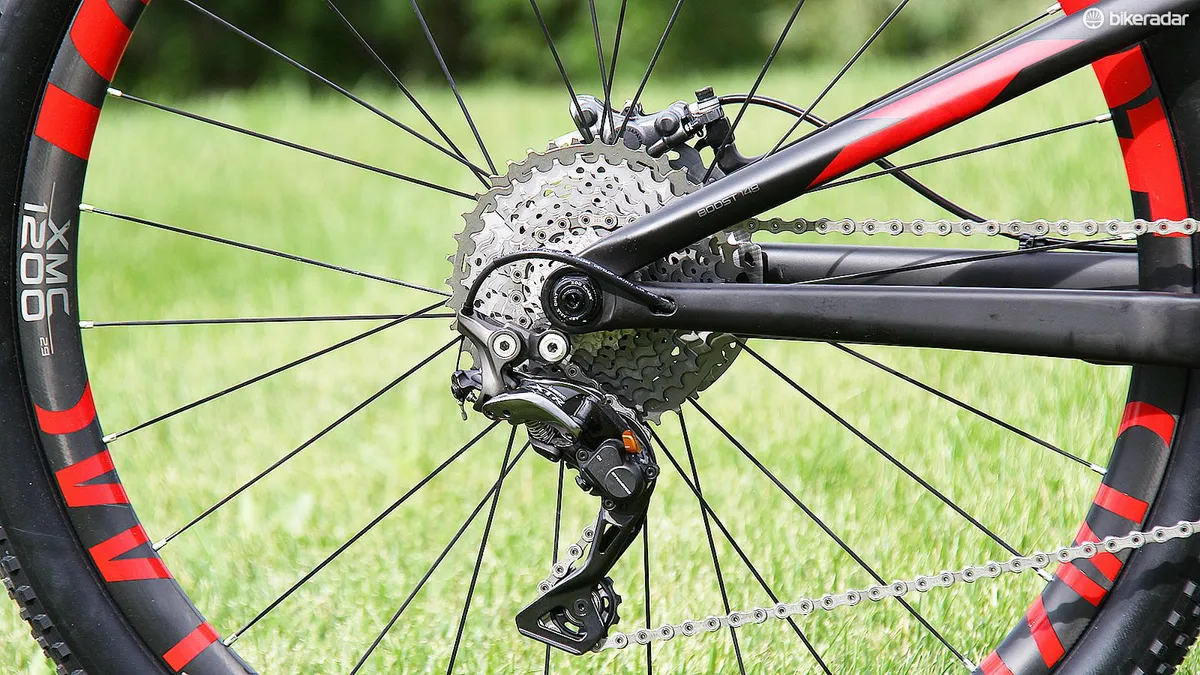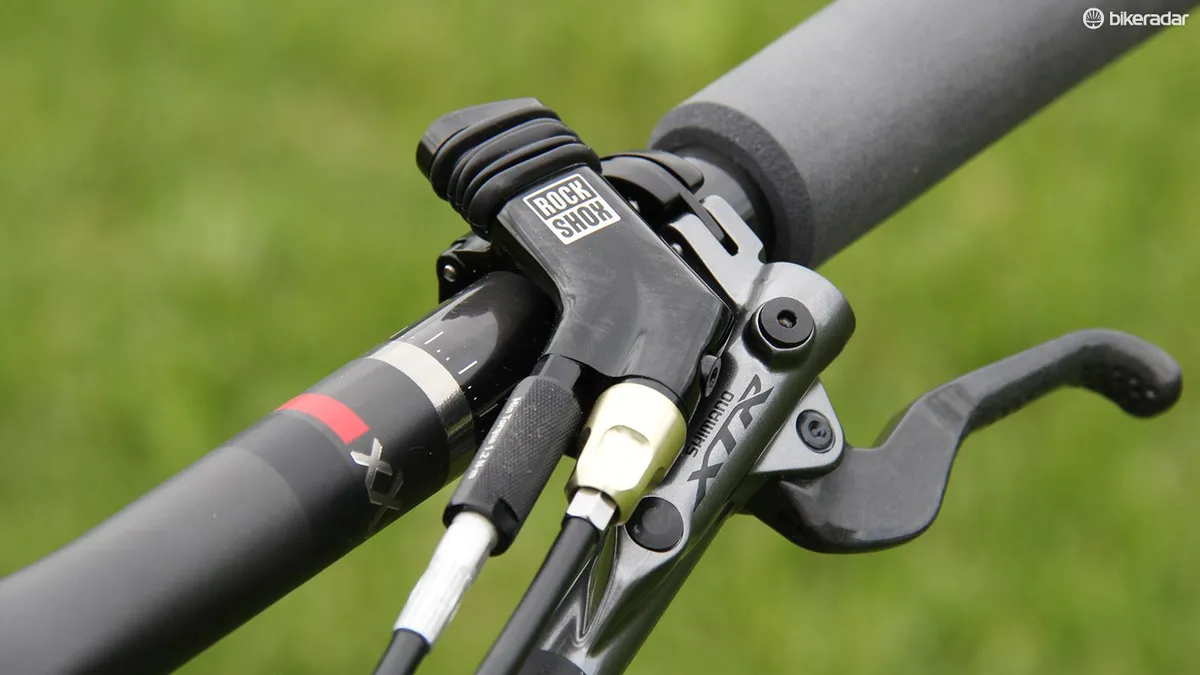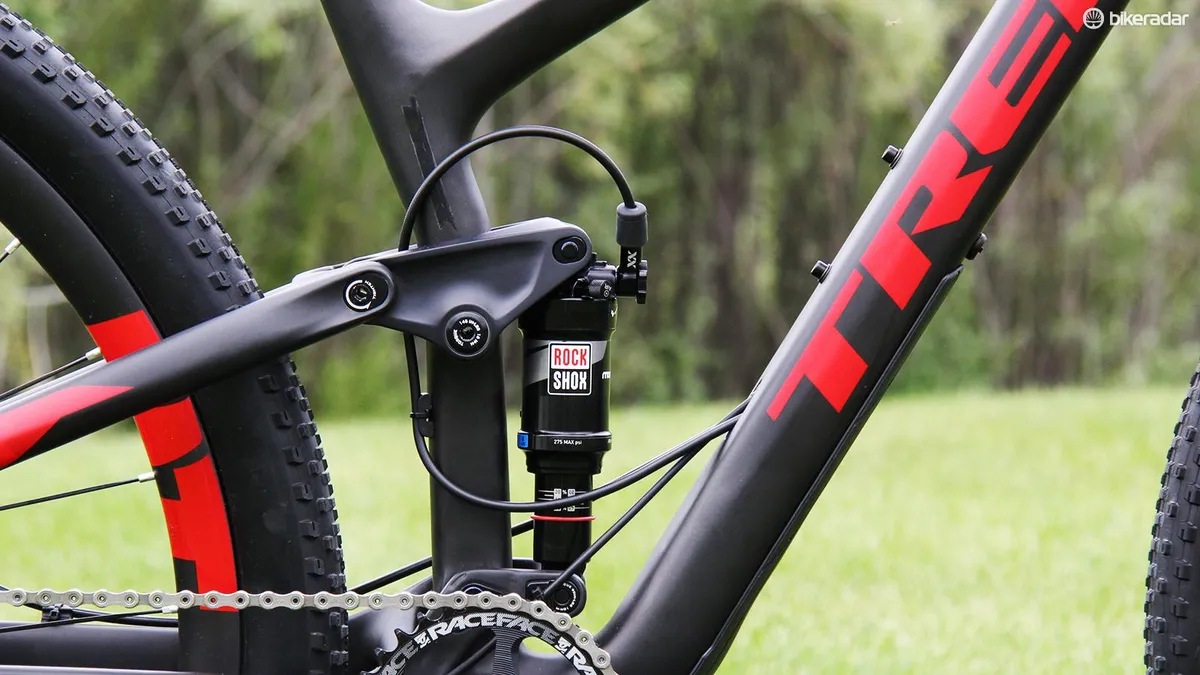Trek has just released details of its 2016 line and BikeRadar was lucky enough to spend some quality time getting acquainted with Trek’s new flagship cross-country full suspension model. For 2016, the Top Fuel returns to Trek’s line as a thoroughly modern cross-country racer, incorporating a lightweight carbon frame, wider axle spacing, adjustable geometry and Trek’s size-specific wheelsize strategy.
It’s quite early in our testing, but this bike is already proving itself to be incredibly capable. Read on for the details.
- Highs: Stiff and light frame, excellent suspension performance
- Lows: Only holds one water bottle, with no option to mount a second underneath the down tube
- Buy if: You’re serious about cross-country racing and must have the best
Reigniting the Fuel
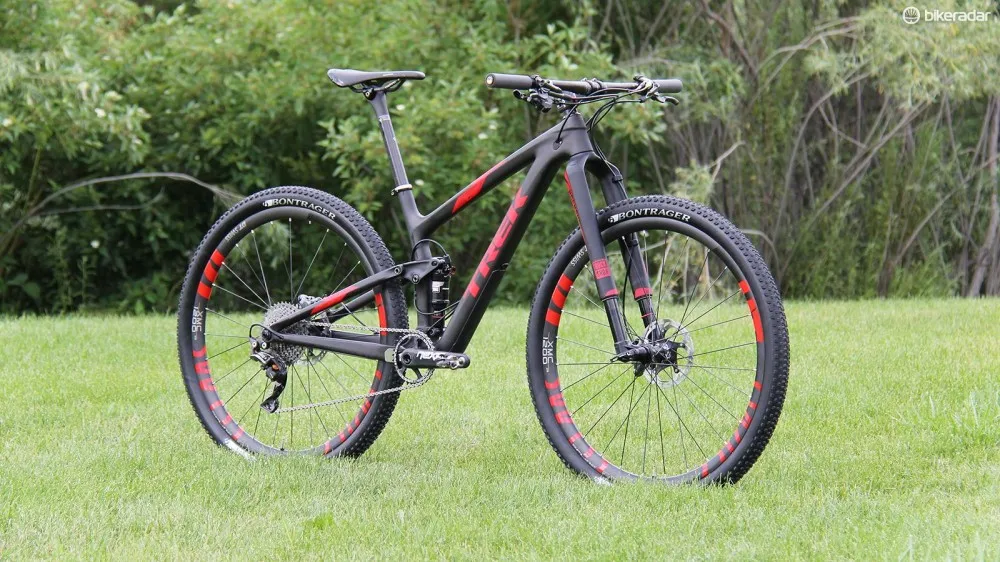
The Fuel had been a staple in Trek’s cross-country line for many years. The original Top Fuel was introduced for the 2005 model year and went through several revisions before meeting its end in 2012.
“It was a very good bike; it just had the wrong wheel size,” said Travis Ott, Trek’s mountain bike brand manager.
The Top Fuel was steamrolled under the 29er juggernaut and ousted from Trek’s line by the Superfly 100.
It took a few years, but Trek revived this storied model. The new Top Fuel incorporates many of the technologies the company has developed for the longer-travel Fuel EX and Remedy trail bikes into a race-bred package.
“We went into this knowing how cross-country racing is changing. It’s becoming much more technical. The popularity of trail riding has influenced cross-country and we wanted to make a more capable XC race bike,” Ott said.
Design details
Gone is the top tube-mounted link used on the Superfly 100. In its place is a carbon EVO rocker linkage that drives the Top Fuel’s 100mm of rear travel.
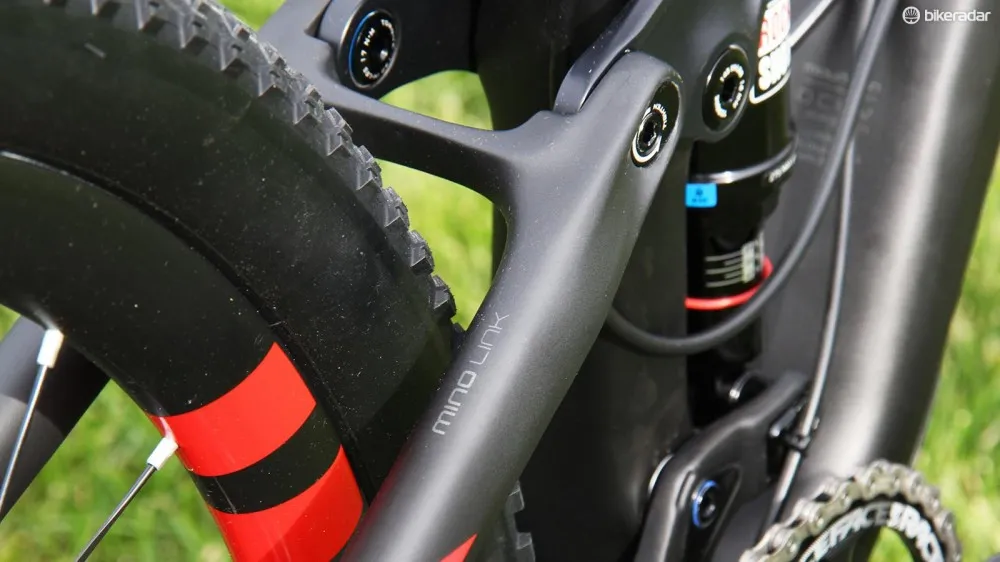
The Mino Link allows the rider to fine tune the Top Fuel's handling
Like the Remedy, the new Top Fuel uses Trek’s Mino Link. This offset chip, located at the junction of the seatstays and rocker link, allows the rider to fine tune the frame geometry. The rider can select from a lower, slacker position, with a 70 degree head tube angle and 33cm / 12.9in bottom bracket height, or a higher, steeper setting, with a 70.9 degree head tube angle and a bottom bracket height of 34.1cm / 13.4in.
In addition to adjustable frame geometry, the Top Fuel’s chainstays are considerably shorter than the outgoing Superfly 100. Thanks to the use of the wider Boost 148x12mm rear axle, Trek was able to shorten the rear end to just 435mm/17.1in — that’s 17mm/.6in shorter than the Superfly 100.
Trek used the reintroduction of the Top Fuel platform as an opportunity to incorporate its Smart Wheel strategy into the line.
“Ride the fastest wheel that fits,” is the company’s mantra these days. For several of Trek’s female racers, that means riding 27.5in wheels. World cup racer Emily Batty, who stands 1.61m (5ft 3in) tall, had to resort to some drastic cockpit setups in order to achieve her preferred position on a 29er.
Trek’s approach to wheelsize now corresponds with frame size. The Top Fuel is offered in 15.5, 17.5, 18.5. 19.5 and 21.5in sizes. The four largest frames are all designed around 29er wheels, while the 15.5in frame is shod in 27.5in hoops to give shorter riders a better fit without resorting to negative-rise stems.
While the Top Fuel borrows heavily from several of Trek’s existing full suspension models, it also ushers in a new internal cable management system. Dubbed Control Freak, this modular cable system is designed to handle almost any combination of 1- and 2x drivetrains, brake, dropper seatpost and remote lockout scenarios. Oh, and it has to be compatible with electronic drivetrains, too.

The Top Fuel's internal cable routing system can handle almost any combination of cables and hoses
“When we ran the numbers, we realized we needed to account for 54 different cable routing configurations. Control Freak is designed to be a flexible, clean, easy-to-use system,” Ott said.
The Top Fuel has two entry ports at the top of the down tube and an exit port for the rear brake, rear derailleur and (in the case of the Top Fuel 9.9 SL) the hydraulic lockout for the RockShox Monarch XX rear shock. There are also guides along the side of the down tube that allow the rear brake to be run externally.
The Top Fuel also ushers in a change in bottom bracket standards for Trek's carbon mountain bikes. Trek is phasing out its proprietary PF95 bottom brackets in favor of the widely-available PF92 standard. The Top Fuel, Stache, redesigned Fuel EX 29 and new Procaliber all use PF92 bottom brackets, while the Remedy and Slash, which remain unchanged for 2016, retain the PF95 standard.
As the top shelf offering in the line, the Top Fuel 9.9 SL features a full OCLV carbon frame. Our 17.5in tester weighs in at a very respectable 21lb / 9.5kg. Claimed weight for a 17.5in frame with shock and associated hardware is 1,900g / 4.2lb, which is approximately 50g heavier than the Superfly 100 it replaces.
First impressions: all about agility and efficiency
The Top Fuel may come with a slight weight penalty over the outgoing Superfly 100 frame, but it’s better for it.
From the moment the Top Fuel is leaned through the first turn it was readily apparent just how much stiffer, and thus responsive, this bike is. When pushed hard into corners the Top Fuel holds a line and pops in and out of corners with ease.
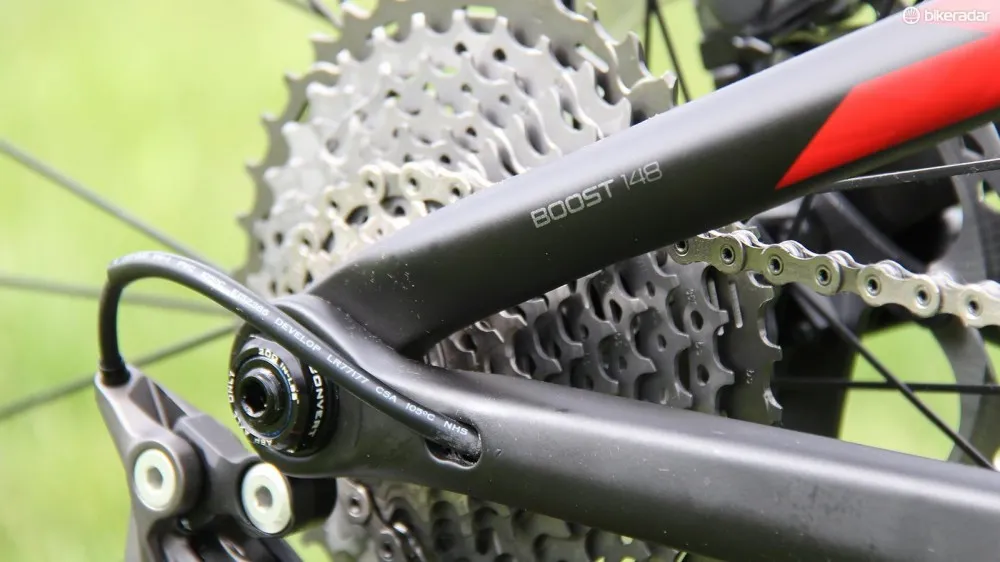
The Top Fuel's 'boosted' full carbon rear end is appropriately solid
The combination of a shorter rear end, boosted axle spacing, and large diameter seat- and chainstays result in a rock-solid carbon chassis — something that could not be said about the Superfly 100.
The Mino Link, which serves up a 10mm change in bottom bracket height and a degree change in head tube angle, is intended to allow racers to quickly fine-tune the Top Fuel’s handling to suit course conditions.
After a quick bit of experimentation this tester quickly settled on the lower, slacker setting. According to Trek, this is the position preferred by most of the company's sponsored athletes as well.
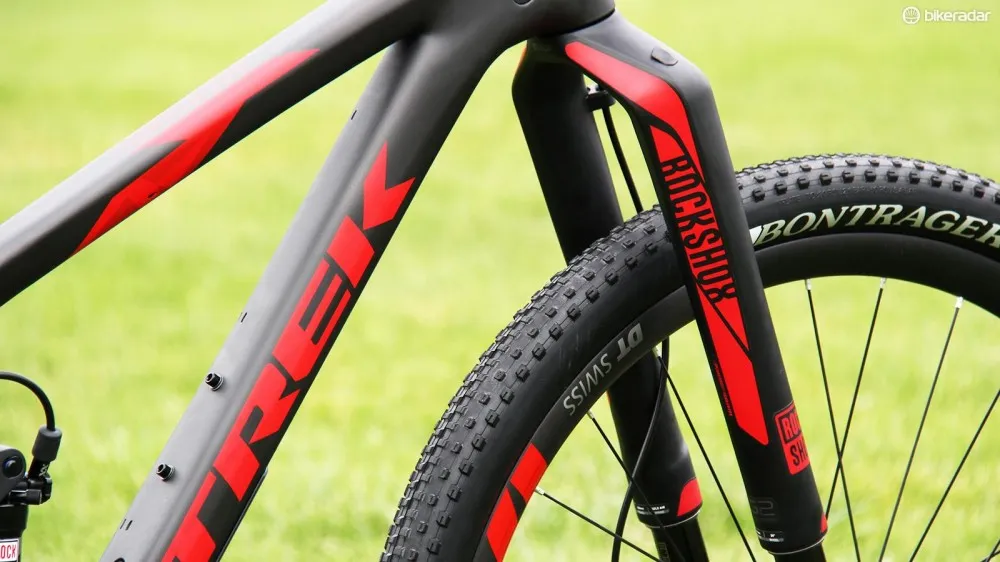
The matching RS-1 fork ties the build together
While several of our testers, including myself, are still underwhelmed by the price-to-performance ratio of the Rockshox RS-1, there’s no denying that when painted to match, it has a way of tying a build together — and looking good is half the battle, right?
The RS-1 fork is paired with a Monarch XX rear shock. Together they deliver sporty suspension performance that provide just enough give to keep the wheels tracking over small bumps, while saving the bulk of their travel for larger impacts.
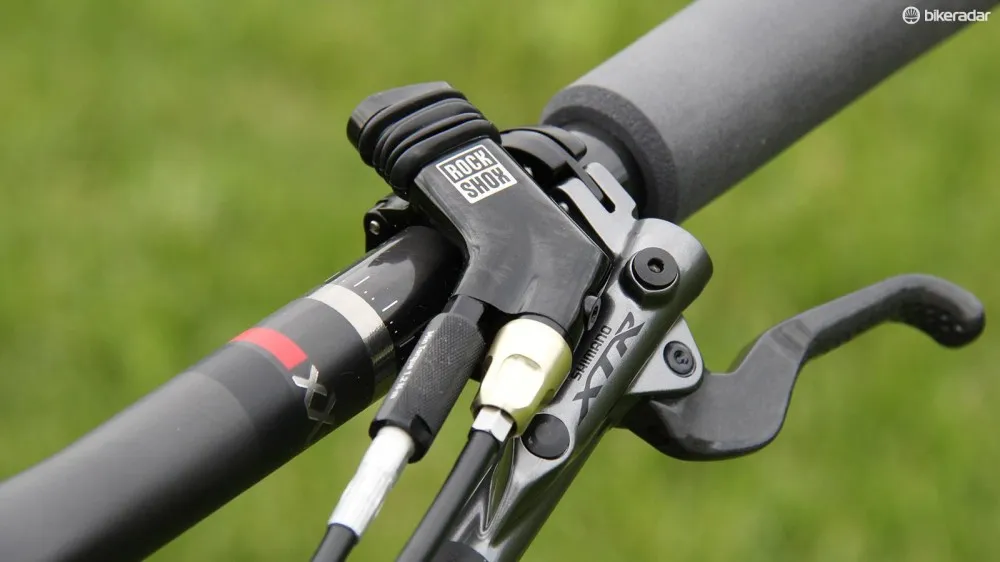
Do you like hammering out of the saddle? If so, this lever is your new best friend
The RockShox Full Sprint remote simultaneously locks out the fork and rear shock with the push of a button. If you’re gunning for the holeshot, or preparing to rocket up a smooth climb, this is a great weapon to have in your arsenal.
While we’re on the subject of suspension performance, of all the technologies Trek incorporated into the Top Fuel, there is one notable absence: RE:aktiv.
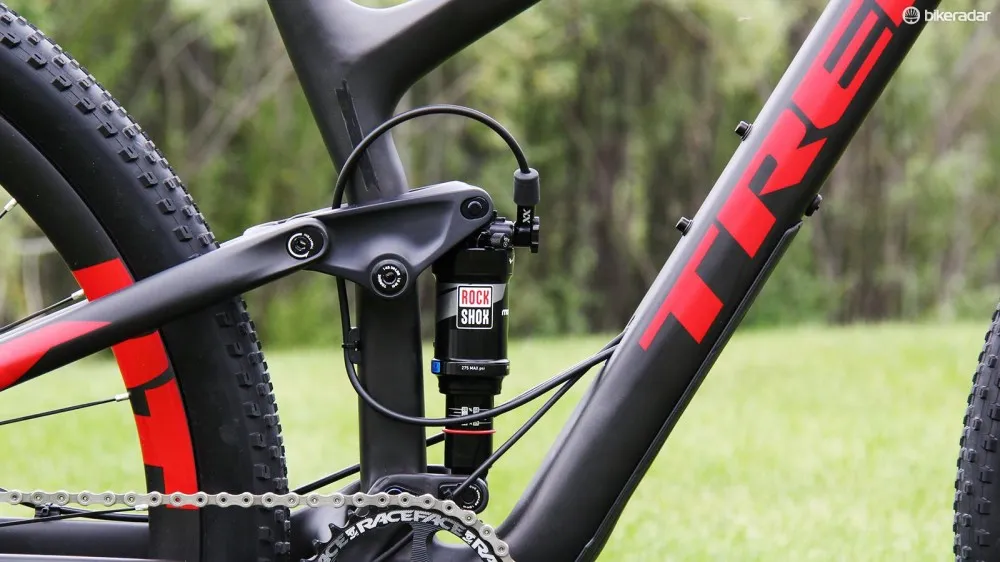
The hydraulic lockout line does a bit of a loop to the Monarch XX shock
Why would Trek leave this much-touted shock technology off its premier race bike when it devoted so much time and effort to co-developing the RE:aktiv suspension technology with the Formula One suspension experts at Penske Racing for its trail bikes?
The reason, according to Ott, is that it’s not simply a matter of bolting on a RE:aktiv damper. “We do think there’s a lot of potential there. However, bringing that technology over to race bikes was not just plug-and-play. Our suspension engineers are exploring it,” Ott said.
Overall, the Top Fuel 9.9 SL is an outstanding cross-country race contender, but it’s not without a few minor shortcomings. The Top Fuel can only carry one water bottle in the mainframe, while its arch rival, the Specialized Epic, is designed to fit two bottles in the main triangle. There’s also no provision to mount a second water bottle on the underside of the down tube — something for endurance racers to take note of.
Verdict
It’s still early in the testing process, but it's quite clear that Trek has improved its top-end race steed by leaps and bounds. Where the Superfly 100 was light and capable, yet a bit soft-ended, the Top Fuel 9.9 SL adds the chassis stiffness and taut suspension performance that many die-hard cross-country racers crave.
